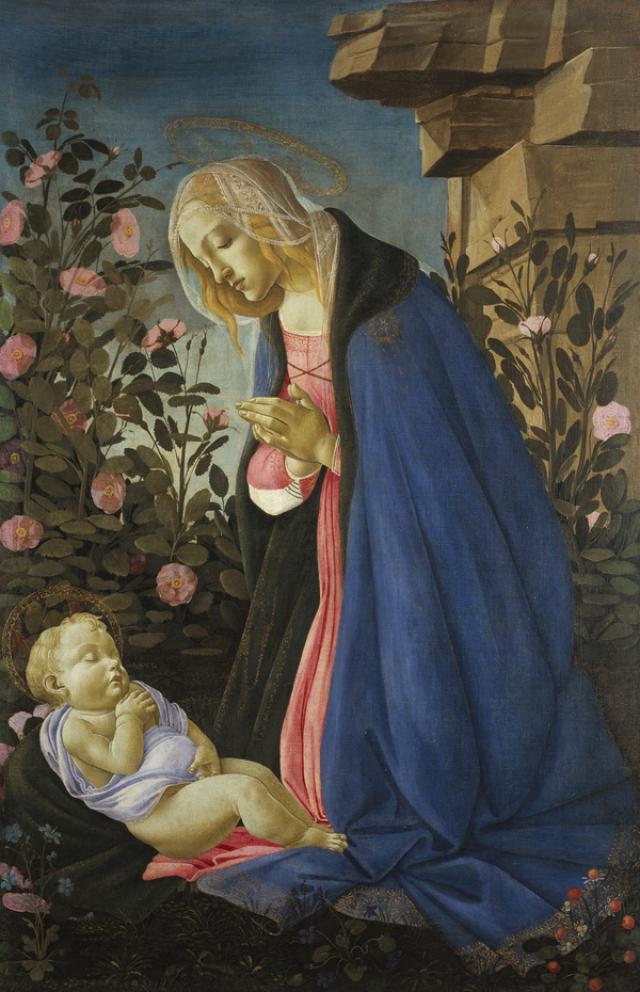Renaissance
A period in European culture from the fourteenth to the sixteenth centuries in which the visual arts flourished with advances in the treatment of anatomy and the use of perspective. It is particularly associated with Italy, where it began, though the term applies elsewhere. It is noted for a revival of interest in the cultures of ancient Greece and Rome.

What was the Renaissance?
The Renaissance (French for rebirth) was a dramatic period of growth and development following the Middle Ages, lasting from the fourteenth to 1the sixteenth century. The style is defined by a 'rebirth' of interest in classical scholarship and values, particularly the cultures of ancient Greece and Rome, which spread into all art forms including literature, visual arts and architecture.
Within the visual arts, the understanding and depiction of human anatomy developed exponentially, as did techniques for creating linear and atmospheric perspective, with paintings achieving greater levels of realism in art than ever before. Subjects shifted from religious iconography to the secular, with themes taken from mythology, legend and history. Historically the Renaissance is divided into two main categories: The Early Renaissance and the High Renaissance which was eventually superseded by Mannerism, or the High Renaissance.
The Early Renaissance
The birth of the Early Renaissance is often referred to as the Quatrocentro, Italian for the 1400s, referencing the fifteenth century in Italian art when a dramatic cultural shift took place. Artists rejected the flat planes, stiff formalism and two dimensions of Gothic and Romanesque iconography in favour of classical art with a more humanistic outlook. Faces became more real and lifelike, expressing believable emotions and bodies were positioned in more natural poses, with a greater sense of form.
Subject matter expanded beyond religious subjects to include historical subjects, battle scenes and portraits of ordinary people, with art moving increasingly closer to ordinary life. This surge of naturalism in art occurred alongside similar advancements in architecture, philosophy, theology, mathematics, science and design. The rising interest in humanism placed man at the centre of the universe, leading to close studies of real people, the human body, and the natural world surrounding them. Characters from classical art and mythology were increasingly seen as enlightened and began to infiltrate all art forms.
Giotto di Bondone and Cimabue are often cited as the first Early Renaissance, or Proto Renaissance, artists. Although their subject matter was still deeply religious and devotional they both broke with tradition in their depictions of the human form, investing their figures with a solidity and weight as well as capturing a sense of raw, real emotion in their expressive faces.
In the following decades three pioneers rose to prominence, often referred to as 'the triumvirate of the Early Renaissance'. Centred in Florence, they were Brunelleschi, Donatello and Masaccio. Brunelleschi was primarily an architect but he is often cited as the first to discover single point perspective, which led to a dramatic change in painting styles, where depth and space could be depicted with startling levels of realism. Donatello was a sculptor who created believable bodies with an increasing understanding of human anatomy, while Masaccio’s paintings expanded Giotto’s ideas, investing figures with a sculptural sense of form, solidity and emotion, as if they were a part of the real world.
Many subsequent Florentine and Tuscan artists continued to develop these ideas, with other important discoveries including relieve schiaccatio, or shallow carving in painting to create atmosphere, and tromp l’oeil to create form and depth. Artists developed highly individual styles and ideas, such as Sandro Botticelli’s dreamy, sentimental, decorative studies of female characters and religious subjects, seen in The Virgin Adoring the Sleeping Child, about 1485. Ambitious projects and works of art were frequently commissioned by wealthy merchants and nobles who ruled Italy’s cities, including the Medici family in Florence, creating a flourishing environment for creativity to grow.
The High Renaissance
Towards end of the fifteenth century, the Renaissance ideas in Italy reached a peak in Florence, culminating in the High Renaissance. The advancements made in the Early Renaissance period, particularly the understanding of human form and anatomy, foreshortening the human figure, and the depiction of real depth and space were developed further by dedicated artists with huge ambitions, whose work reached dizzying levels of mastery and skill, artworks which are considered today as some of the finest in the history of art.
The period’s most outstanding figures were Leonardo da Vinci, Michaelangelo, Raphael and Donato Bramante, with each mastering a wide range of subjects, techniques and styles. New methods also emerged, including Da Vinci’s groundbreaking painterly sfumato technique, blending tones together to create a sense of form and atmosphere seen in The Madonna of the Yarnwinder, 1501. Other artists produced quadrature, or ceiling paintings, creating the effect of looking upwards into heaven, with Michaelangelo’s Sistine Chapel Ceiling, 1512, being one of the finest examples of the period. The focus was increasingly on beauty and perfection and human bodies took on a divine anatomical perfection, exemplified in Michaelangelo’s David, 1504. In Venice, Titian, Giorgione and Palladio developed ideas in similar directions, exploring a range of secular subjects for important patrons.
Legacy
The humanistic ideals of the Renaissance spread beyond Italy into Northern Europe in the following decades, influencing artists including Albrecht Dürer and Pieter Breughel. The style was eventually overtaken by Italian Mannerism, sometimes referred to as the Late Renaissance, which saw artists lifting ideas about human form, anatomy and space from the High Renaissance and elevating them into exaggerated distortions, amplifying the disorientating effects of foreshortening and deep space, with artists including Jacopo Pontormo and Giorgio Vasari.
Today the art of the Renaissance period remains some of the most revered and important in the world. The ideas they opened up continue to influence contemporary artists, including the value of humanism, real life and the depiction of intense emotion, as well as the scientific explorations into science and its important relationship to visual art.





























